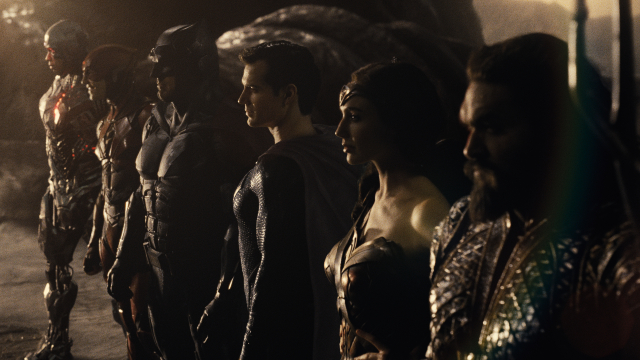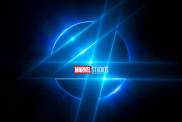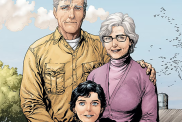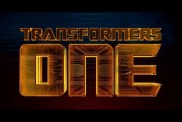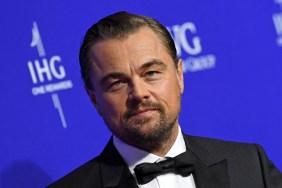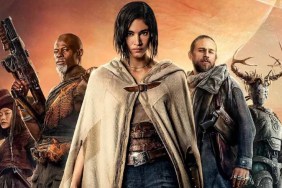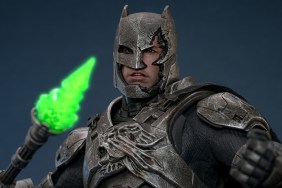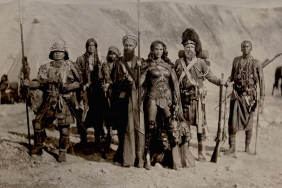After four years and endless hashtags, the long-requested “Snyder Cut” of 2017’s Justice League has been unleashed. Or a version of it, anyway. Based on Zack Snyder’s original workprint, with some added scenes and tens of millions worth of added visual effects and score, this four-hour epic is nothing any studio in their right mind would have released to theaters upfront. But it’s a bold artistic achievement: a comic book movie that feels like a foreign film, and a reach by director Zack Snyder to enter Terrence Malick territory at times. Now entitled Zack Snyder’s Justice League, it’s probably not what either diehard devotees or dogmatic haters expected. A slower-paced story about superhero sadness, it features relatively few of the usual big digital brawls. And it also renders the 75% Joss Whedon version, a.k.a. “Joss-tice League,” utterly irrelevant.
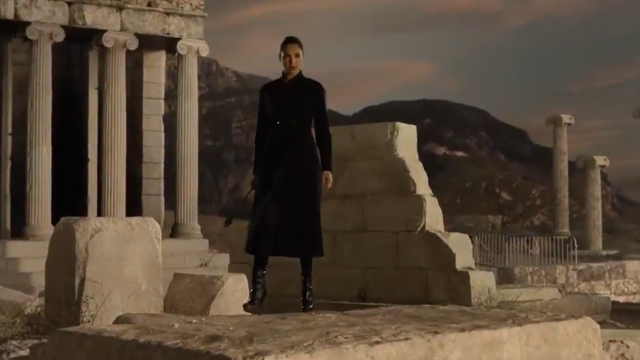
It’s truly remarkable how much of this footage existed and was not used before. Choices made in the 2017 edit now seem doubly baffling; scenes shot by Whedon that looked egregiously fake are long gone. The red sheen pervading all the climactic moments is now the darker gunmetal favored by Snyder. The once-goofy looking Parademons now resemble shiny Star Trek Borg with wings, and everything else sees to have gone through the Snyder 300 desaturation filter. (The Themyscira stuff is basically 300 with women, although they do wear tops.)
RELATED: First Zack Snyder’s Justice League Reactions Praise It as Epic
Yes, the giant CGI villain Steppenwolf (Ciaran Hinds, sort of) is still the flimsiest Superman movie baddie since Nuclear Man. But at least this time he has some semblance of motivation and larger backstory beyond just being evil. And rather than just being a tall gray guy with a turkey neck and funny hat, he’s now a hammer-headed mutant in silver, with oddly large and occasionally soulful eyes.
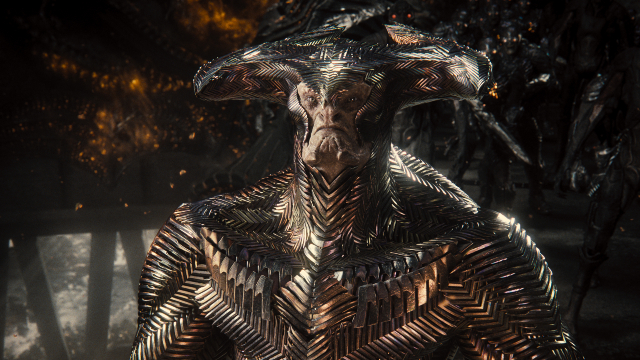
Considering Whedon did an undeniably good job with the first two Avengers movies, at least some of his incompetence on the first cut has to come down to time and money crunches. When a director can’t even light (or post-process) Superman’s costume properly to hide the padding underneath, that’s just an elementary fail. Snyder having had seemingly all the time and money in the world, relatively speaking, makes the current version what it is. But the directors’ visions also massively conflict. Snyder is not without humor, as most of Ezra Miller’s jokes remain. Gone, however, is any humor that undermines the heroes in any way, such as the scene where Aquaman tells the awkward truth under Wonder Woman’s lasso. Or the bit where Batman finally concedes that he bleeds.
RELATED: Zack Snyder Describes the Differences He Sees Between Marvel and DC
Warner Bros. brought Whedon in to make the movie into Marvel-style, constantly light entertainment. Snyder wants his world to feel lived in, to have us take time with these heroes in the spaces they inhabit. Both cuts of the movie feel oddly empty of regular humans. In 2017, that they gave the film a similar feel to DC’s direct-to-video fare, where the viewer gets the sense that animators simply don’t like creating dynamic crowds of people. This year, however, it makes Justice League feel like the first truly post-COVID superhero movie, with its empty streets and open countryside aching of quarantines and lockdowns. That’s no less potent for not having been the original plan. We don’t have to be told that the world fell apart after Superman died; the symbolism of his being a lost hope that must be revived is clear.
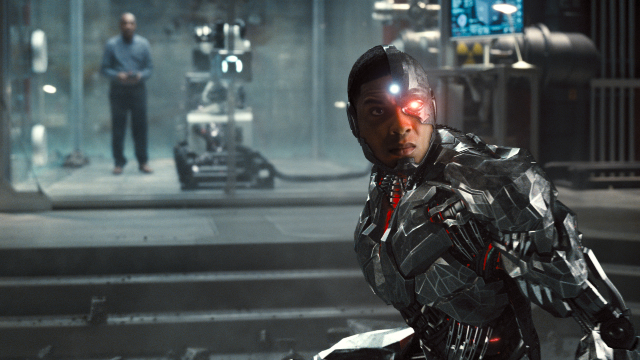
The story follows the same basic beats, but less awkwardly and with more transitional logic. More importantly, it takes the time to establish the world and character of each major hero. Just as Batman v Superman retroactively improves once the viewer has seen Wonder Woman, so too is Justice League now enhanced by Aquaman. Snyder renders Arthur Curry (Jason Momoa) more of a strong and silent type, but Vulko (Willem Dafoe) and Mera (Amber Heard) fill in some backstory. Following Aquaman, it’s odd to see Heard still faking a semi-English accent; even weirder, she maintains it in her reshot scene. Chalk it up to the multiverse which, incidentally, this cut does acknowledge.
RELATED: Zack Snyder Will Host a Watch Party For Zack Snyder’s Justice League
Ezra Miller’s Barry Allen/Flash comes across more hyper, and the Speed Force something more consistently distinctive and applied as an effect. Ray Fisher, and the visual effects team, play Cyborg as a brilliant athlete and hacker, trapped inside his own personal version of The Matrix and burdened with daddy issues. His robo-body, mocked by some as Transformers-like, actually does transform this time, justifying its look. It’s also fun to note that one of his newly recovered scenes mirrors a scene from Doom Patrol pretty closely.
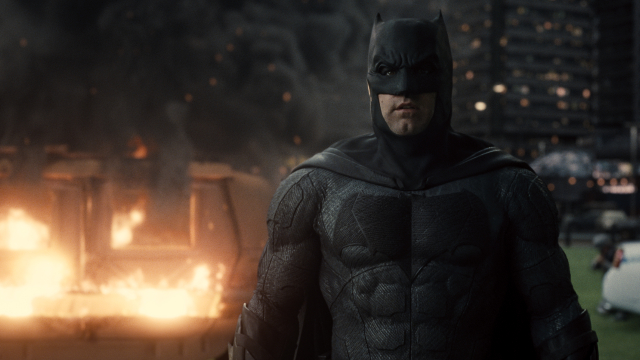
But it’s Gal Gadot who benefits the most from the expansion. Though the Wonder Woman scene fighting terrorists remains irrelevant to the larger plot, she has an empathetic dynamic with Ben Affleck’s Bruce Wayne as co-leaders of the team. It’s rare to see a platonic coed partnership this bonded on the big screen. While Snyder is the kind of guy who might have hooked them up in sequels, he refrains here, and thereby captures a special kind of magic. And the bit where Bruce berates her for pining over a dead boyfriend thankfully got the chop.
RELATED: Welcome Darkseid in the New Zack Snyder’s Justice League Promo
As for Darkseid, who finally shows up this time, fans are going to want more. BUT…seeing the Omega beams in action is one of those things they’ve always needed. His role in the BvS “Knightmare” sequence gets some elaboration, setting up the next movie that we’ll probably never see now. Most of the effects are similarly great, though one or two composites feel distinctly COVID-generated. But as regards the ending, dancing around possible spoilers, let’s just ask this: did the first Avengers end on a “cliffhanger” by revealing Thanos? Or did it simply end upon completion of the story arc at hand? Similar question here. There are Lord of the Rings-style “multiple endings,” but only because Snyder seems averse to credits scenes. The last two scenes of the film could and should easily have played as such.
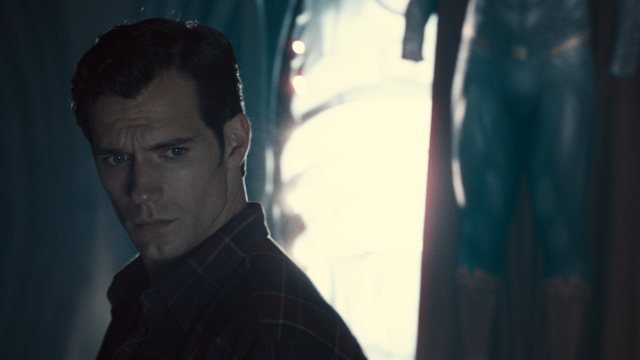
Fans who just look to superhero movies for jokes and fights may not enjoy all four hours, though Snyder’s versions of the action sequences all play vastly better. But for any viewer who appreciates the cinematic version of a heroic epic poem, of the sort that enjoys setting the stage as much as moving the players on to it, this hits. By the time it’s really over, you feel the journey.
Also, and this may well be a minority opinion: please, DC, give us more Jared Leto Joker.
Rating: 4.5/5
Zack Snyder’s Justice League debuts Thursday on HBO Max. If you see it, let us know what you think in comments below.
Recommended Reading: Justice League of America by Brad Meltzer: The Deluxe Edition
We are a participant in the Amazon Services LLC Associates Program. This affiliate advertising program also provides a means to earn fees by linking to Amazon.com and affiliated sites.
